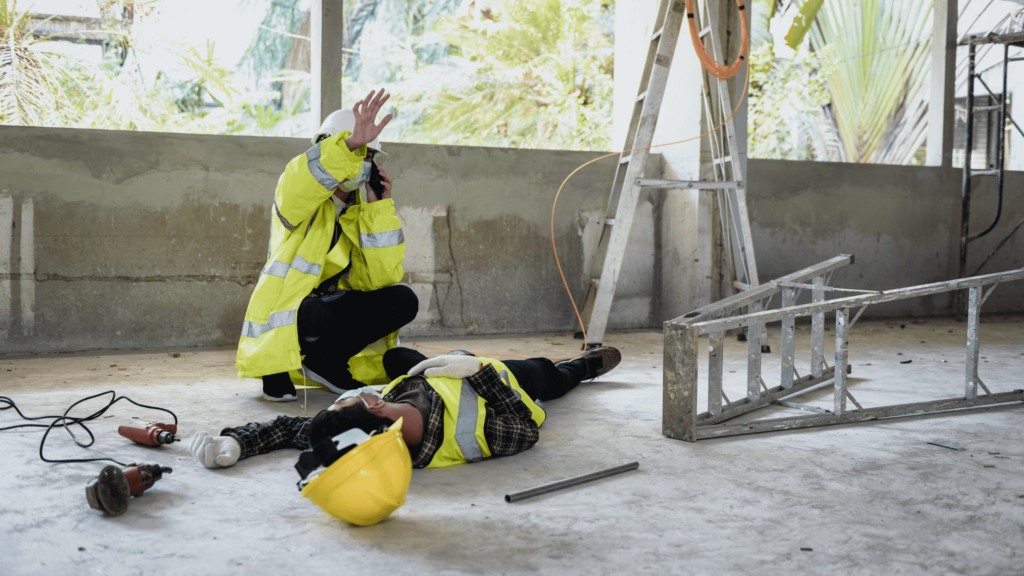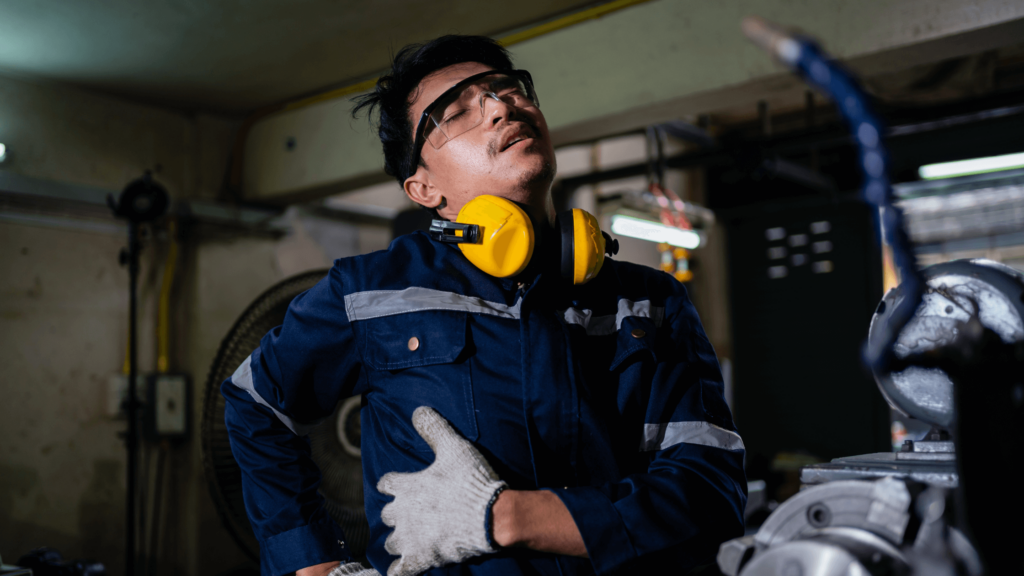Workplace safety protocols are constantly becoming more stringent, but every year, work-related injuries and illnesses combined across U.S. businesses cost billions in losses. Overexertion, falls, and transportation injuries are just a few types of injuries that rack up worker’s compensation bills.
Here are 6 of the most common and expensive workplace injuries.
The 6 most common and expensive work-related injuries
Overexertion
Overall share: 21.53%
Cost: $12.49B per year
Most at-risk industries: Transportation and Warehousing
Overexertion is the most common worker injury claim in the U.S. These types of injuries often arise when excessive strain on the body is repeatedly required. Lifting heavy loads, heavy twisting movements, or repeated lifting and carrying can all lead to overexertion. If there’s equipment or a technique to reduce these types of physical strain on the job, it should be utilized.
Falls on the same level

Overall share: 17.22%
Cost: $9.99B per year
Most at-risk industries: Transportation, Warehousing, and Agriculture
Falls on the same level could happen in any industry, especially if there’s little regard for unattended spills. Wet floors are the biggest warning sign of potential fall injuries, so proper cleanup and PPE are crucial for any on-site team. Ensuring a clean work area and pre-design planning can also reduce the number of trips and falls.
Falls to a lower level
Overall share: 9.79%
Cost: $5.68B per year
Most at-risk industries: Transportation, Warehousing, and Agriculture
Falls to a lower level, while more dangerous than falls on the same level, are less frequent. This is due to heavier safety precautions and more active prevention. Ladder safety, harnesses, guardrails, and marked-off areas where a fall to a lower level can occur are more common practices, leading to fewer overall claims.
Contact with equipment and objects
Overall share: 9.56%
Cost: $5.55B per year
Most at-risk industries: Any industry with heavy operating equipment
This category broadly includes being struck, squeezed, or pinched by equipment, whether that action is performed by the worker or the machinery. Additionally, friction, pressure, or vibration between the injured and the source of the injury are included.
A warning sign that a worker might be at risk for this type of injury includes unsecured racks and equipment and improperly warning-labeled machinery.
Awkward exertions or bodily reactions

Overall share: 6.34%
Cost: $3.68B
Most at-risk industries: Transportation and Warehousing
Improper form when moving on the job can lead to awkward exertion injuries. Unnatural lifting, twisting, climbing, and other uncommon movements may cause muscle strains or bone cracks. Climbing in and out of company vehicles can also cause injuries from a painful bodily reaction.
Transportation injuries
Overall share: 4.75%
Cost: $2.76B
Most at-risk industries: Any industry that requires workers to operate a vehicle
This category includes all types of vehicles, including aircraft, water, and railway vehicles, as well as all roadway and non-roadway vehicles. Additionally, if someone submits an injury claim due to working with an animal for transport, it would fall under this category.
Texting while driving is the most common reason a claim is filed in this category.
The cost of workplace injuries
According to the Workplace Safety Index, the total cost of worker’s compensation claims was $58 billion, averaging more than $1 billion each week.
Trauma to the head and neck consistently ranks at the top of the list of body areas that need the most costly coverage. Because they are fragile, proper PPE should be worn, and resources on head and neck exertion should be available to everyone on the job site.
The bottom line
Safety stats in the workplace ebb and flow. Equipment evolves to become safer, and better standards are introduced. Still, new hazards like cell phones and smartwatches continue to present themselves, creating a never-ending cycle of distraction and damage.
35% of all injury claims are from workers with less than one year on the job. Proper safety training and resources are crucial, and it’s important that each worker abide by them.
Organizations should also routinely involve a qualified risk control consultant to ensure each site meets safety compliance standards.
Like what you read? For more news, announcements, and coverage of what’s happening in and around the trades, subscribe to our weekly newsletter.




6 comments